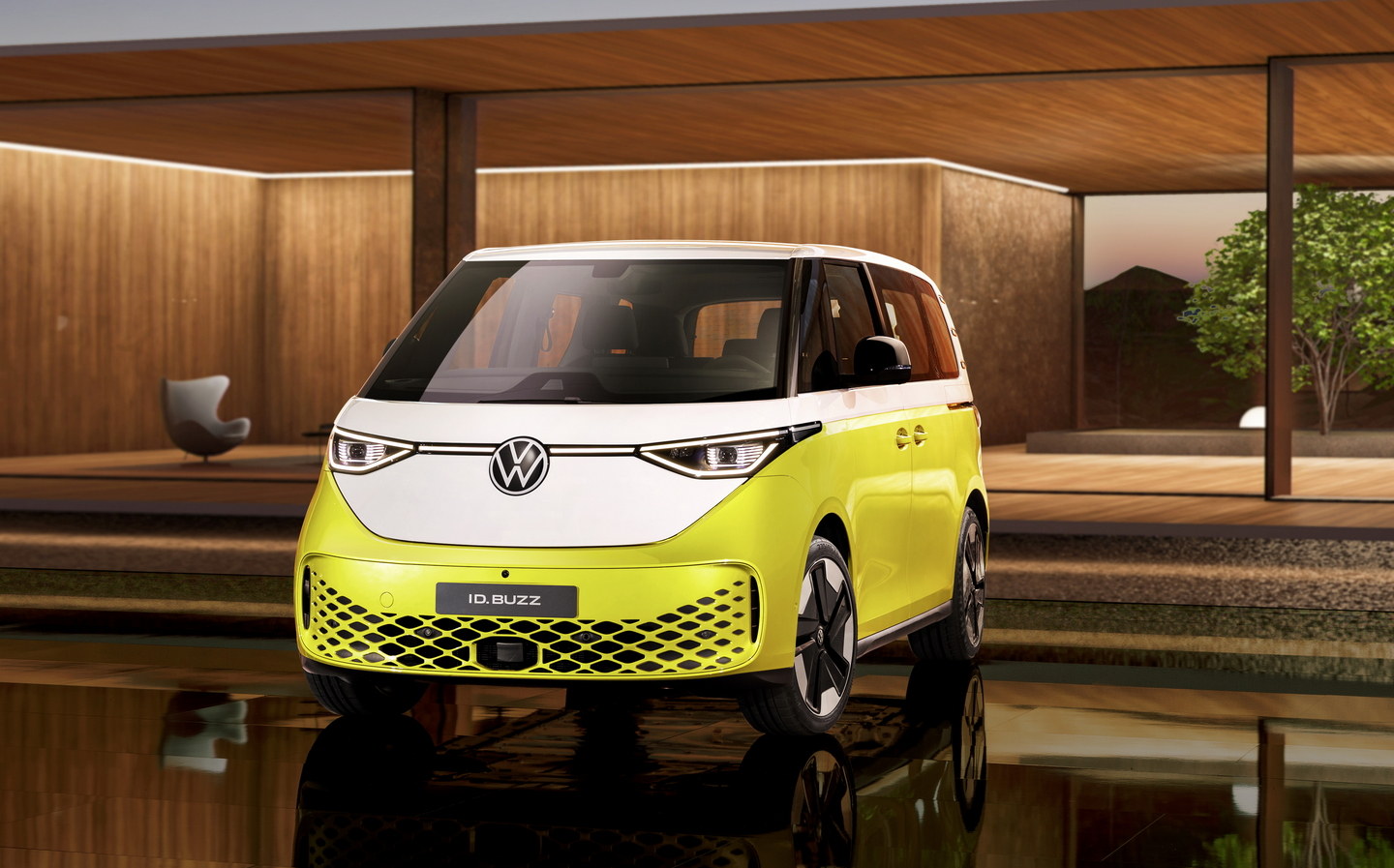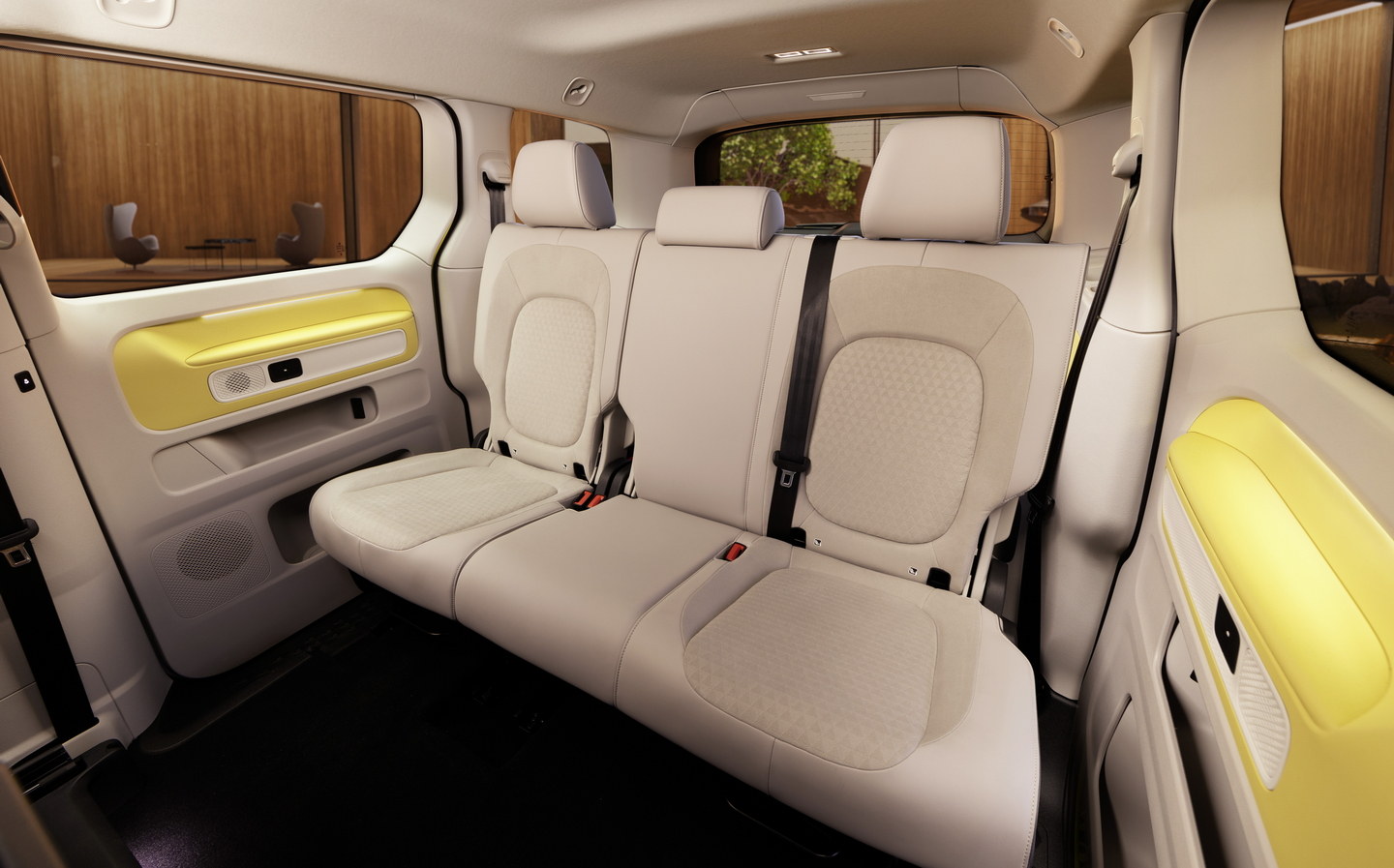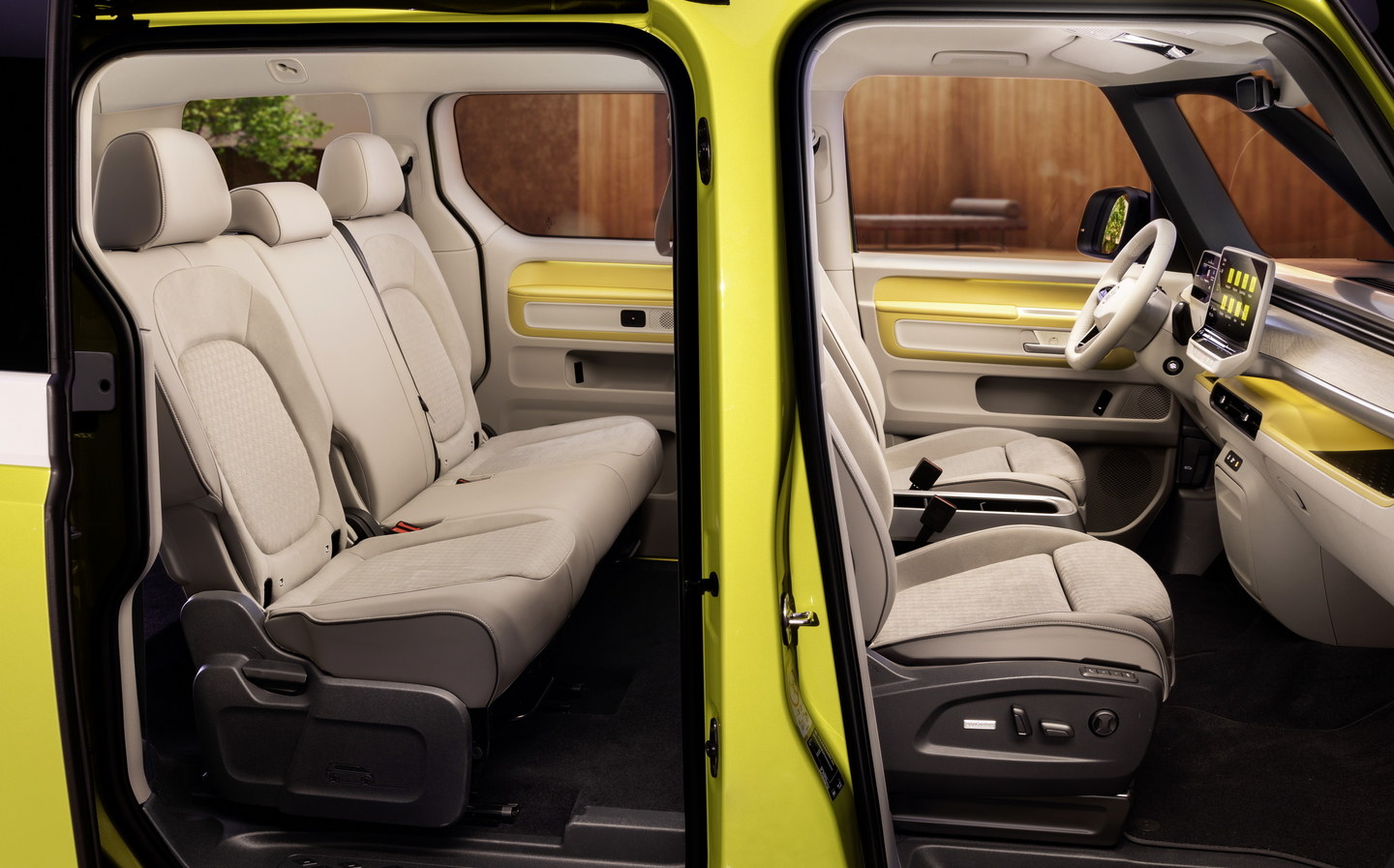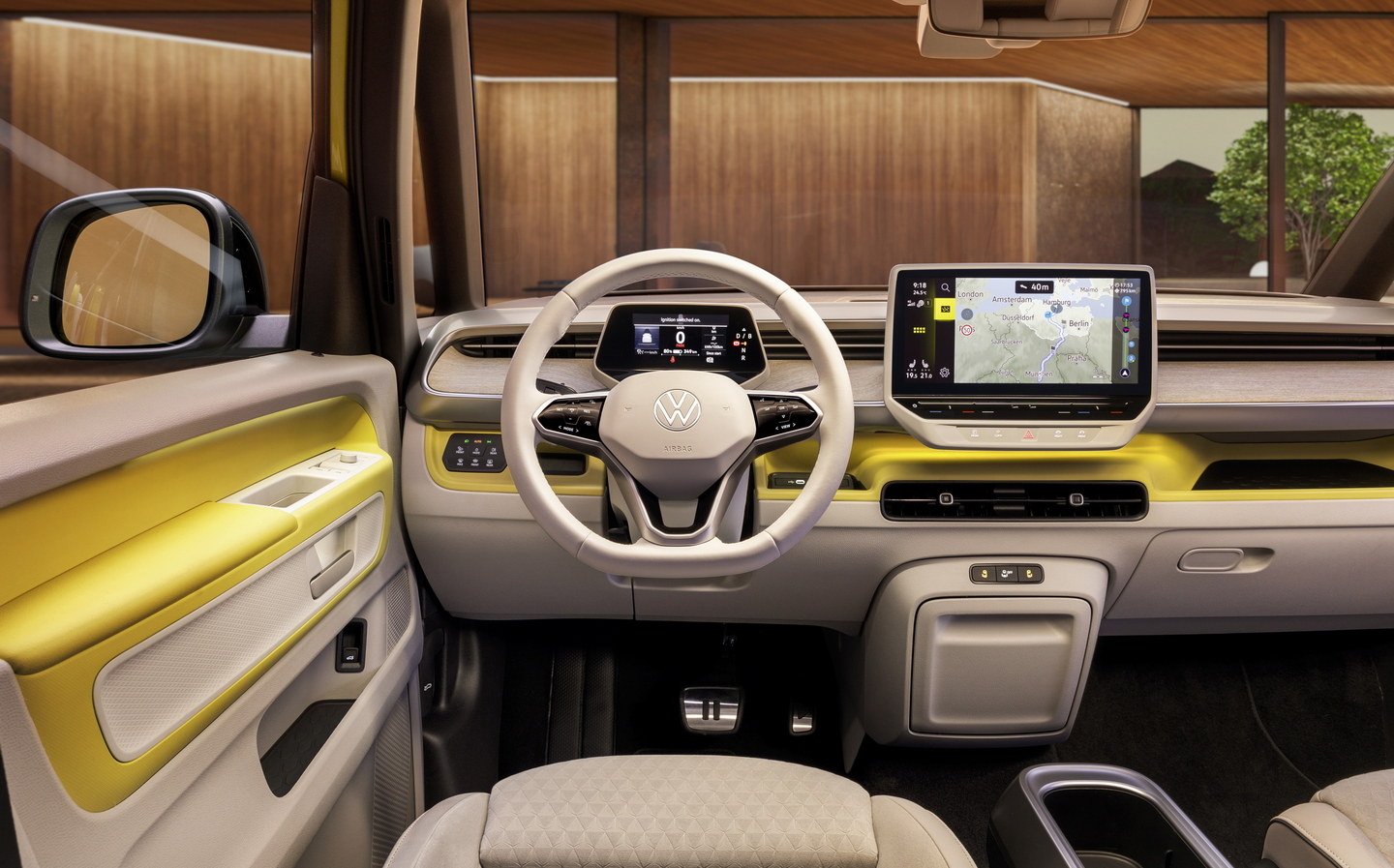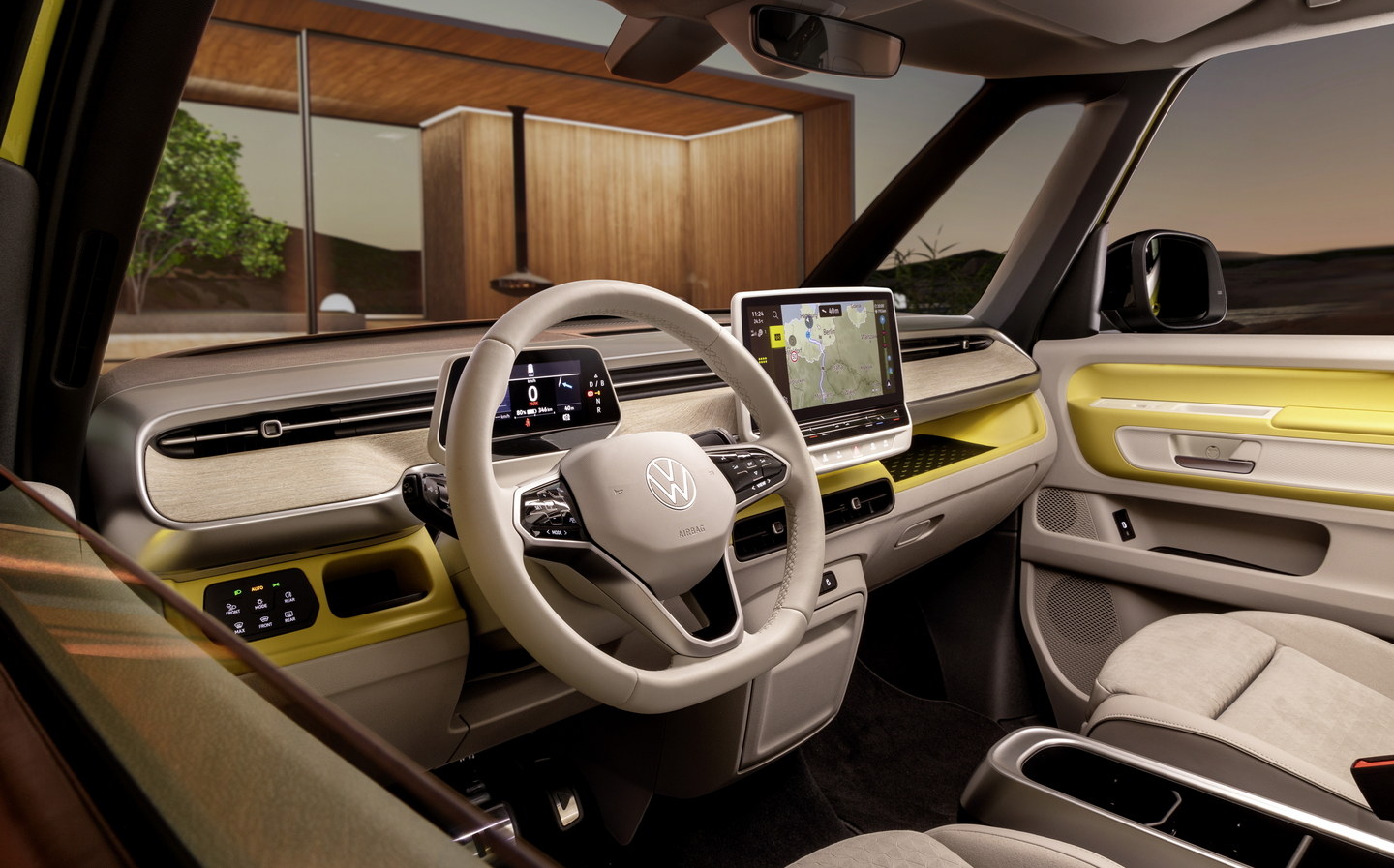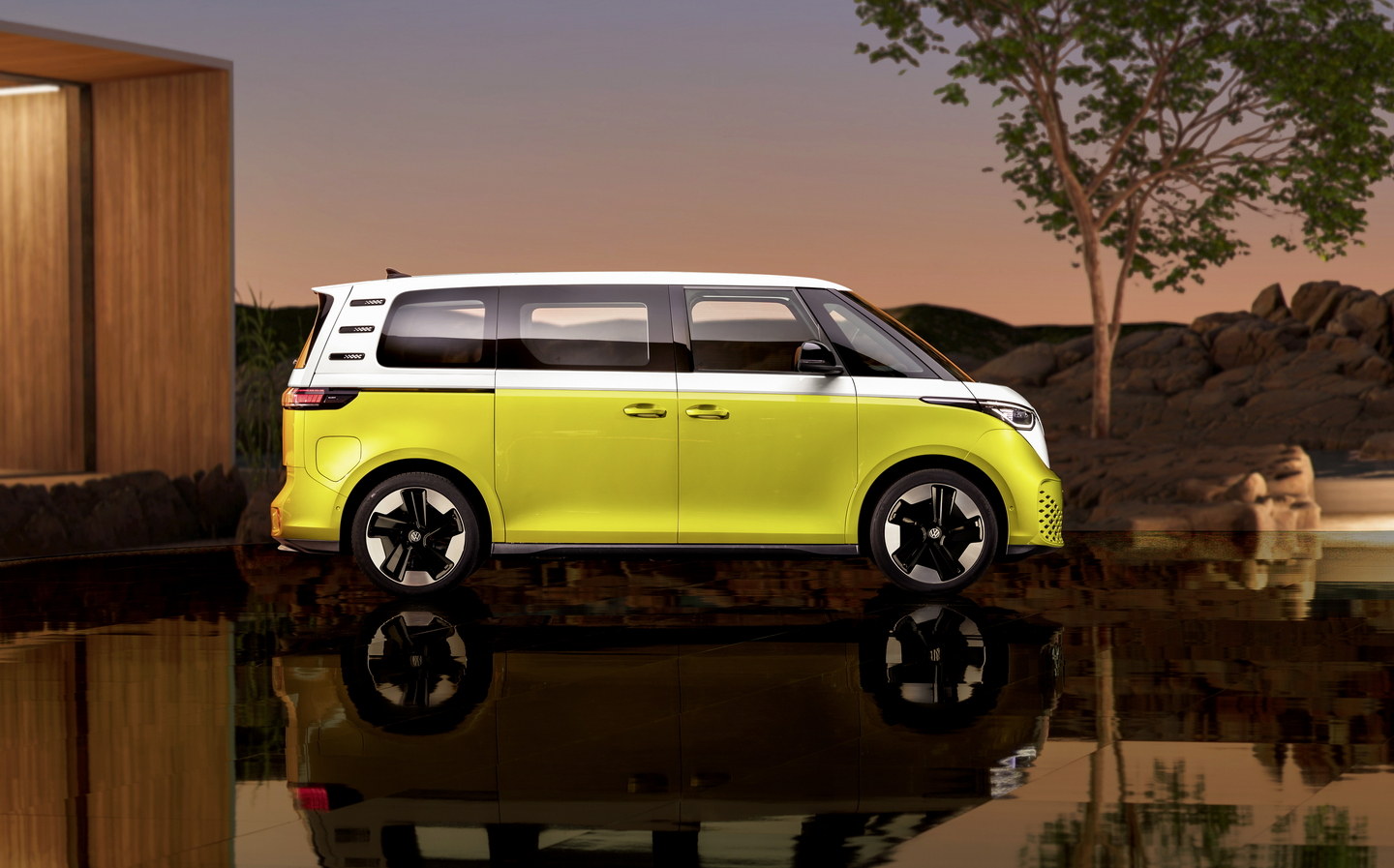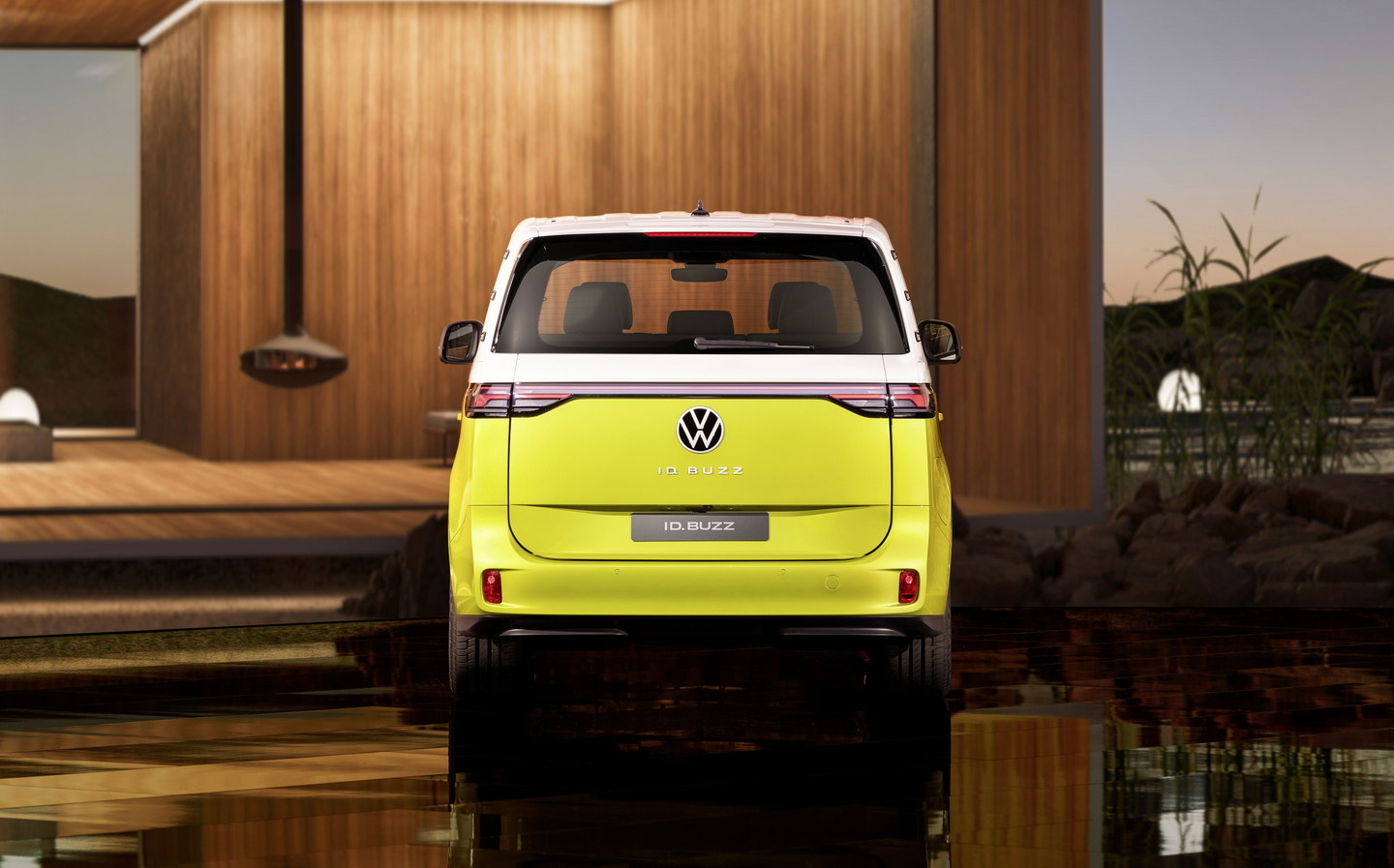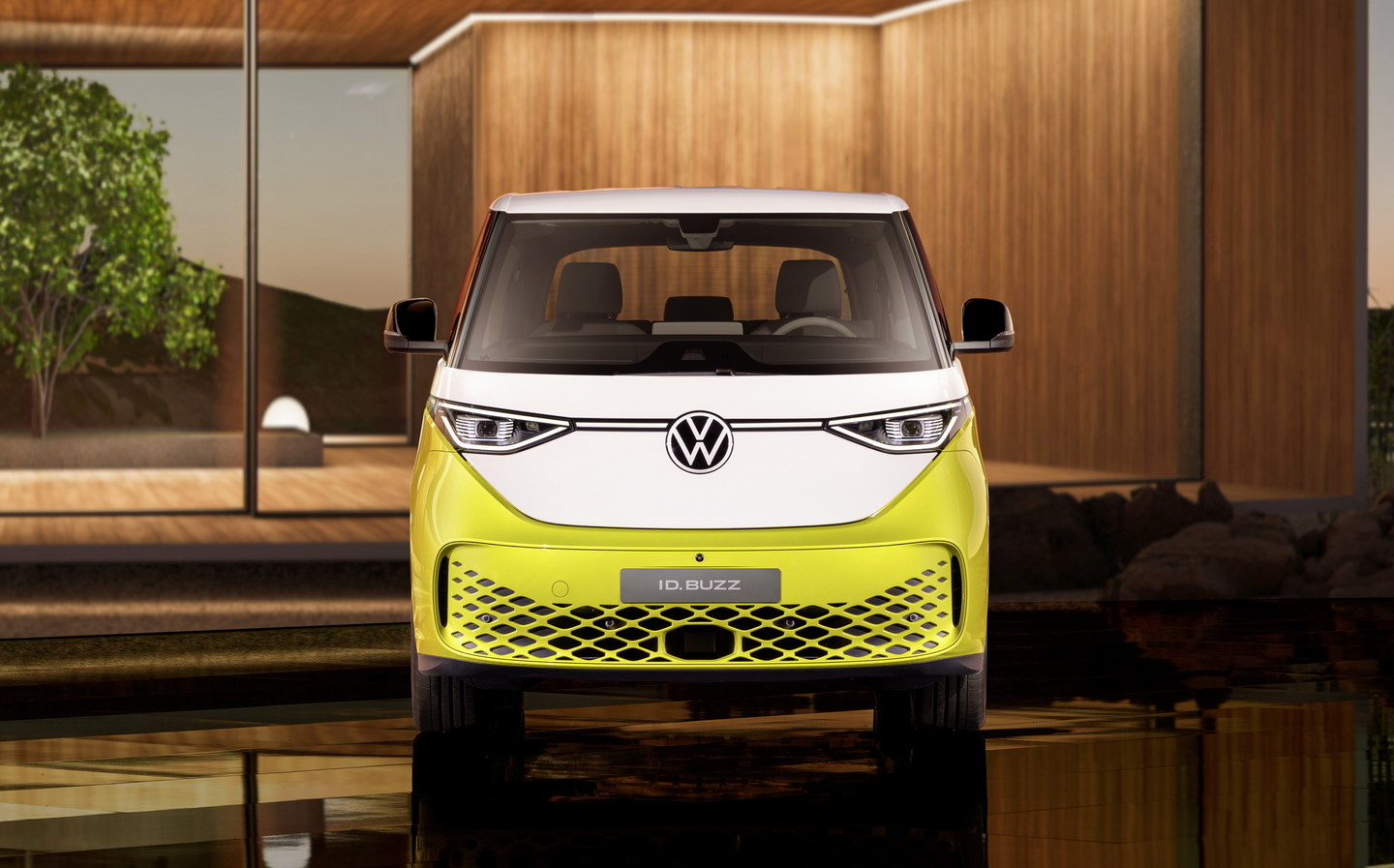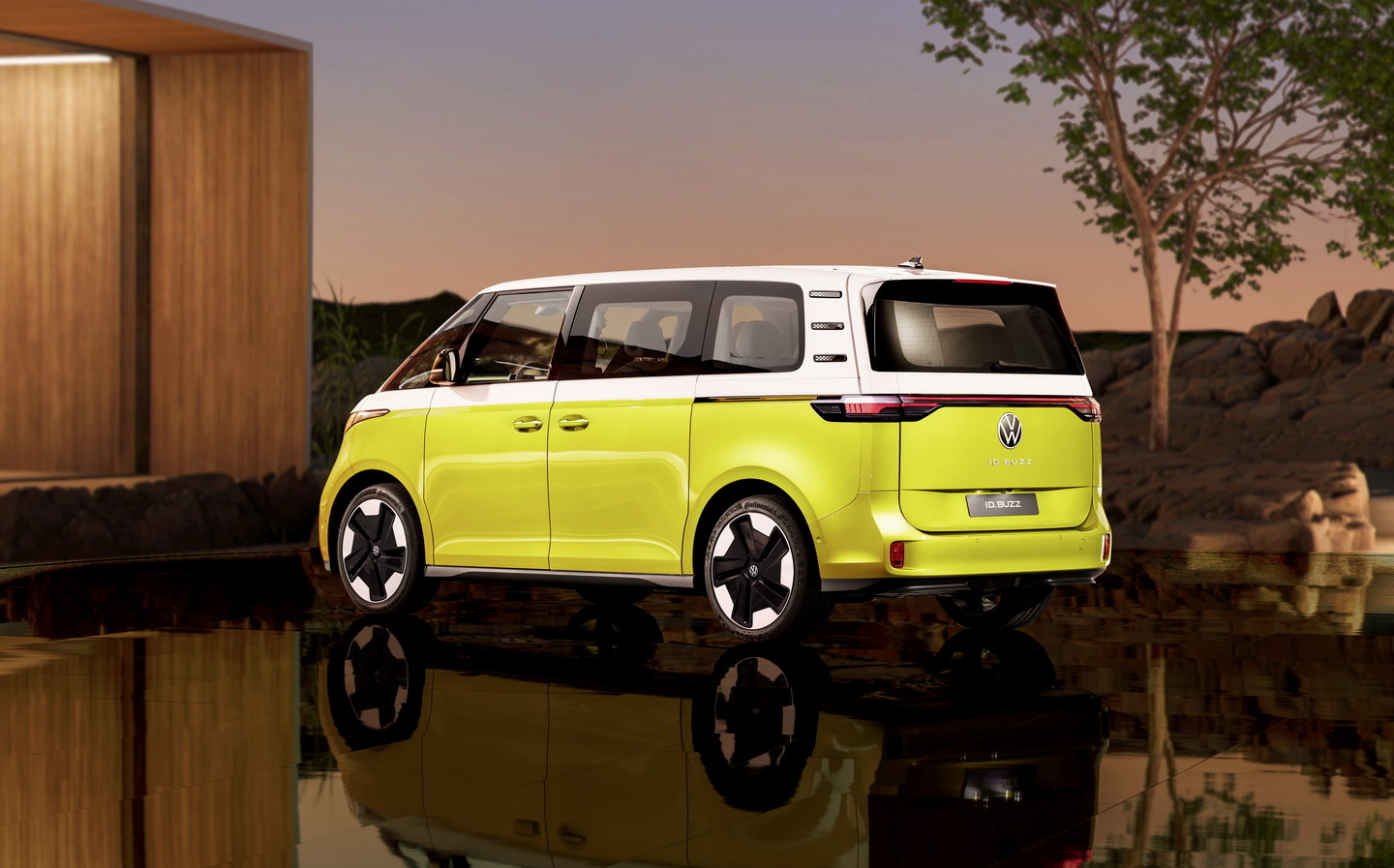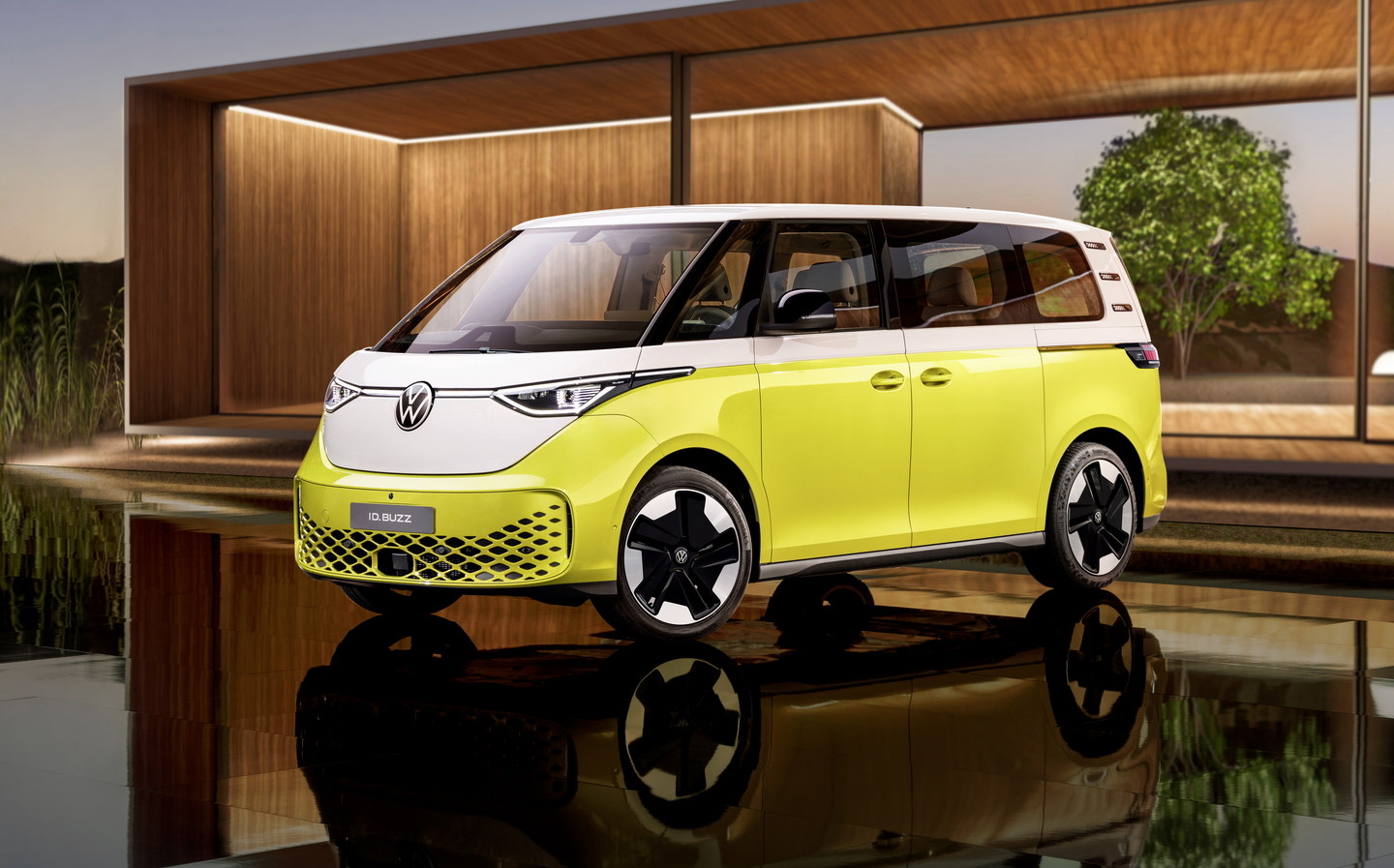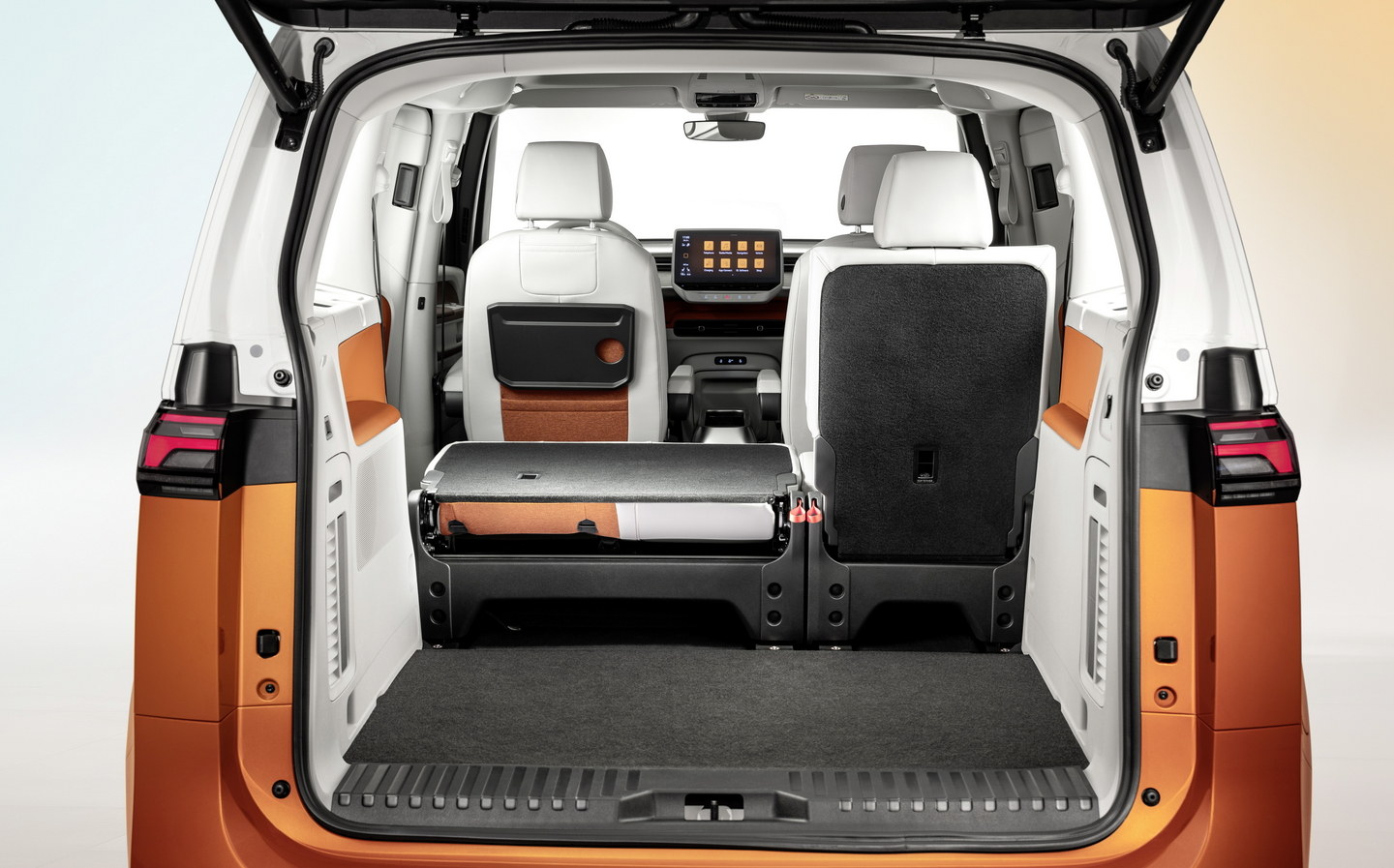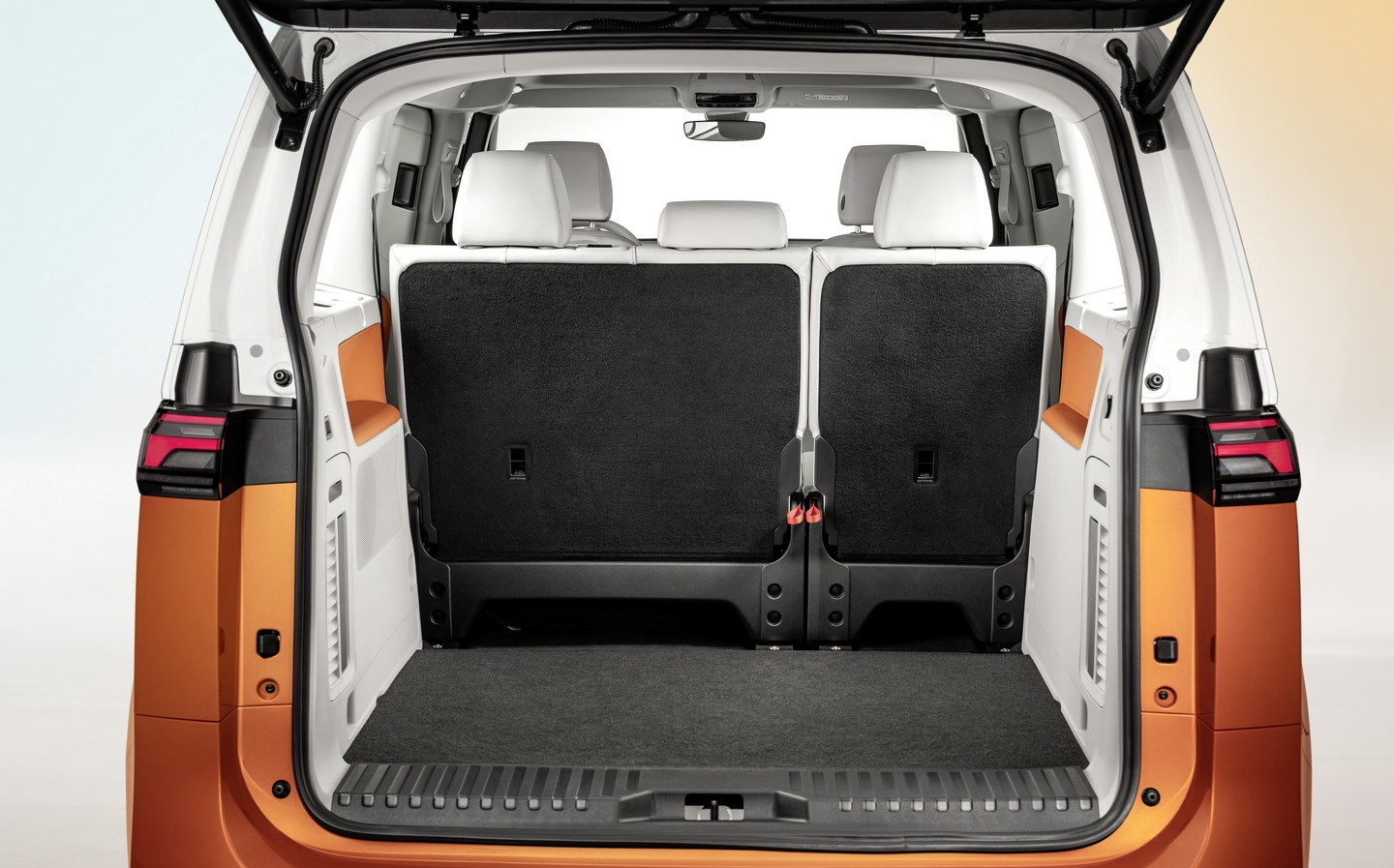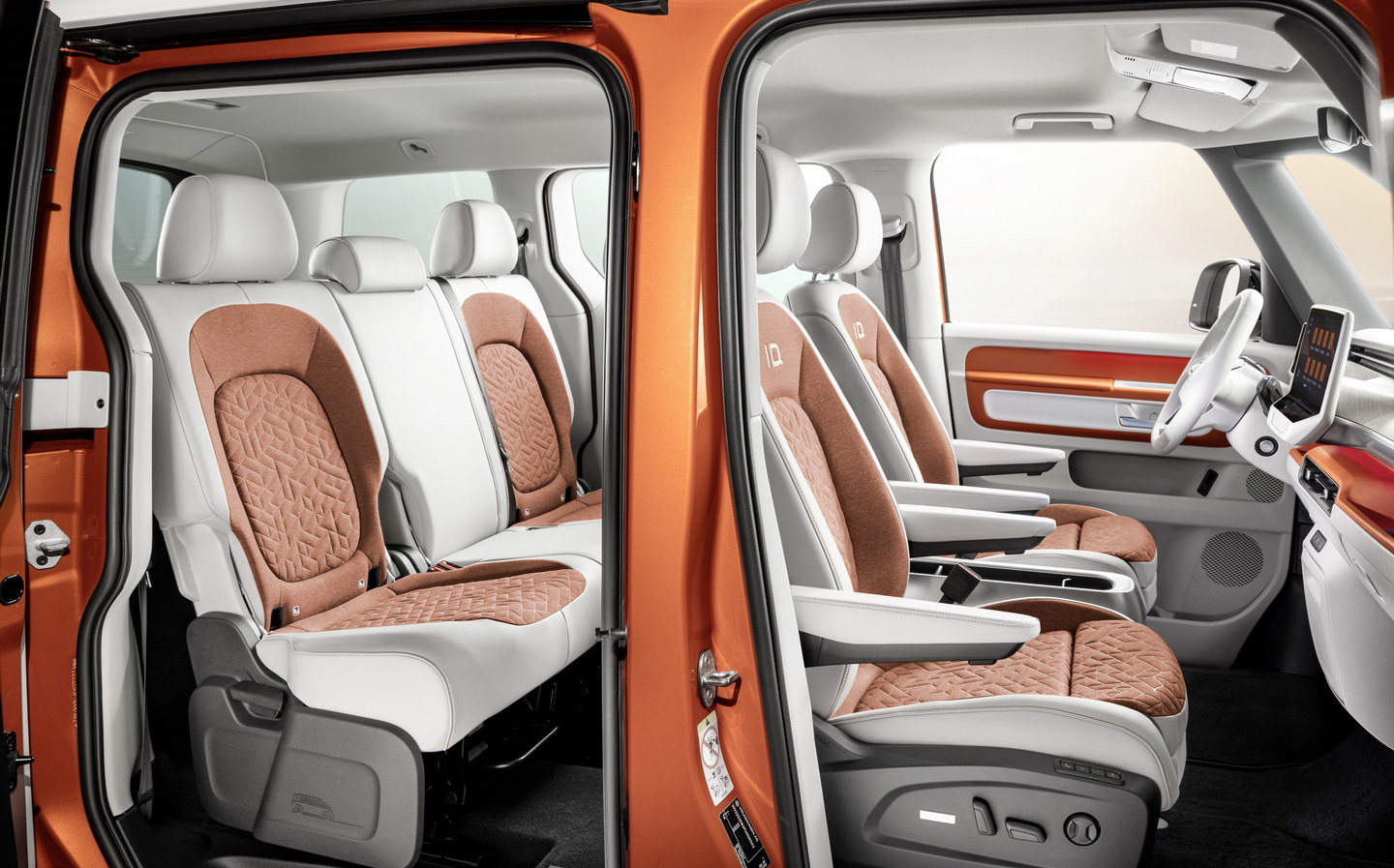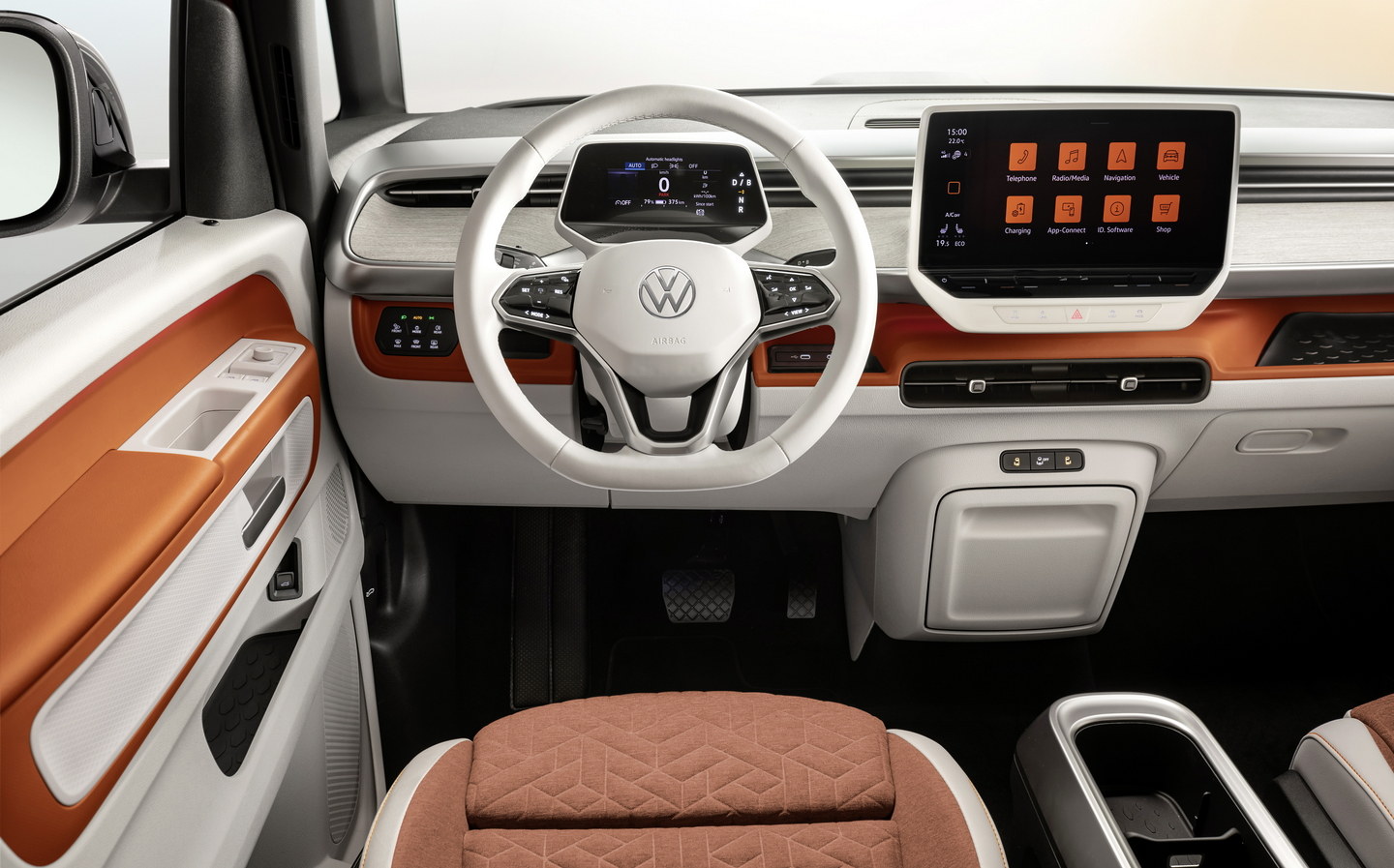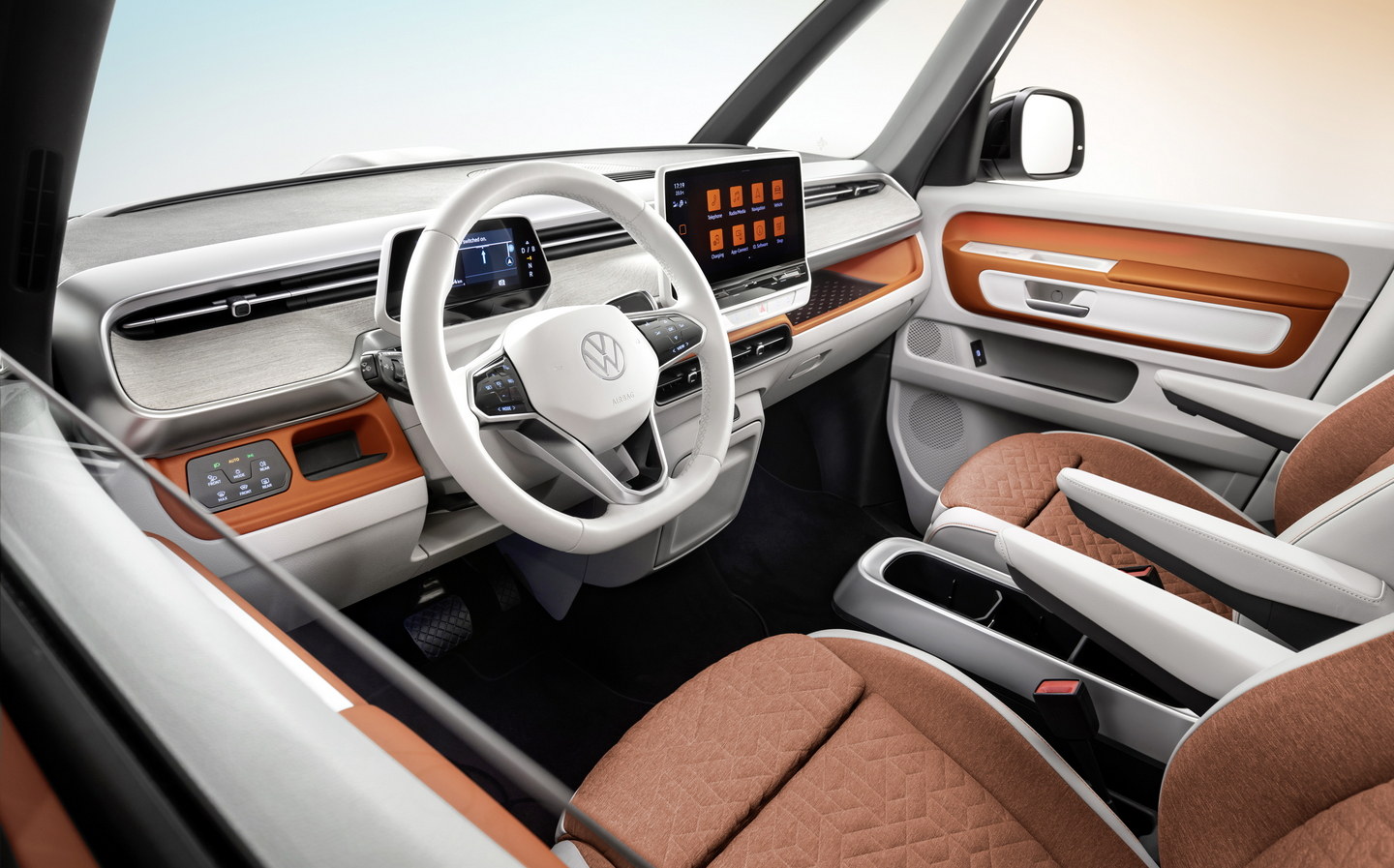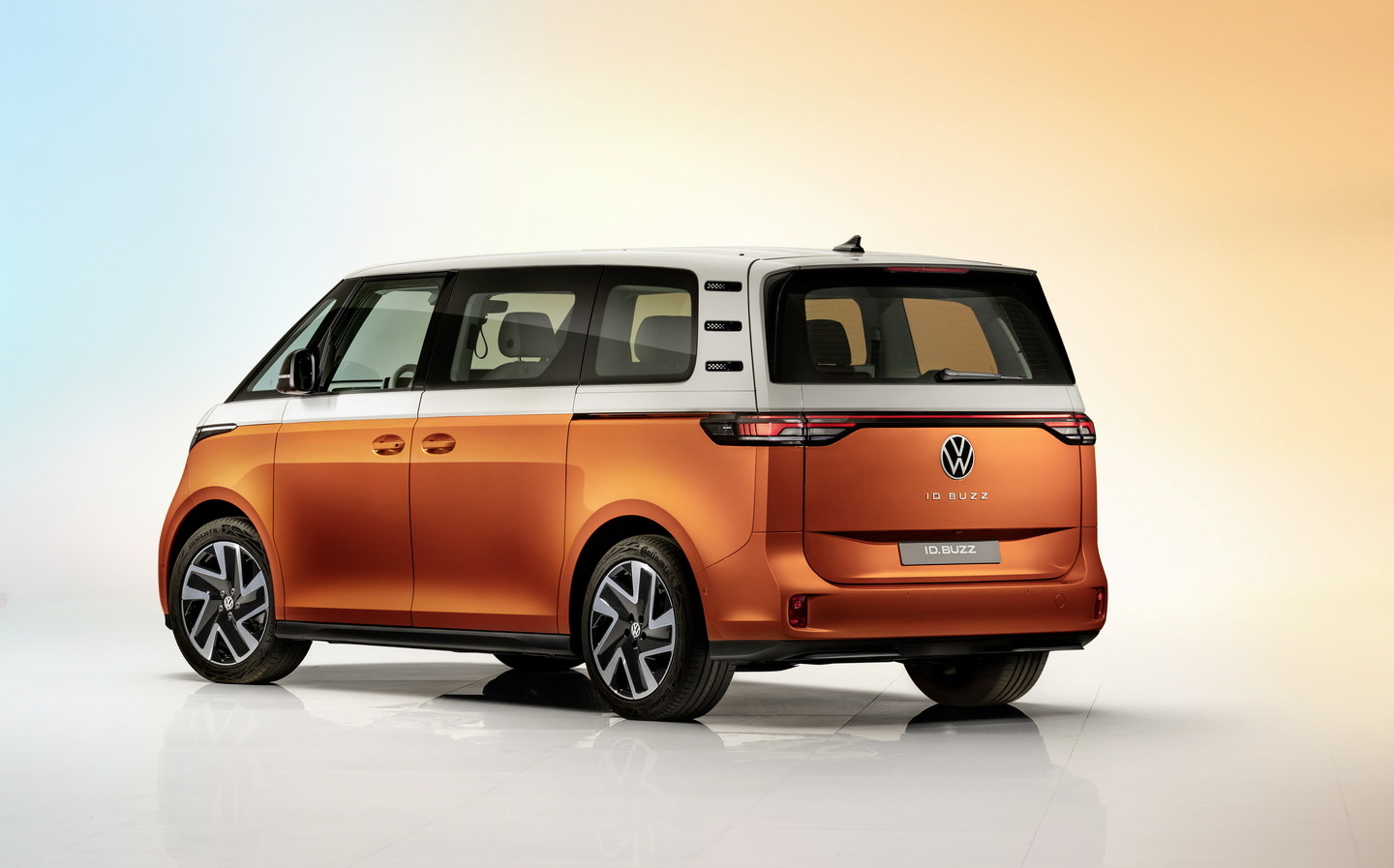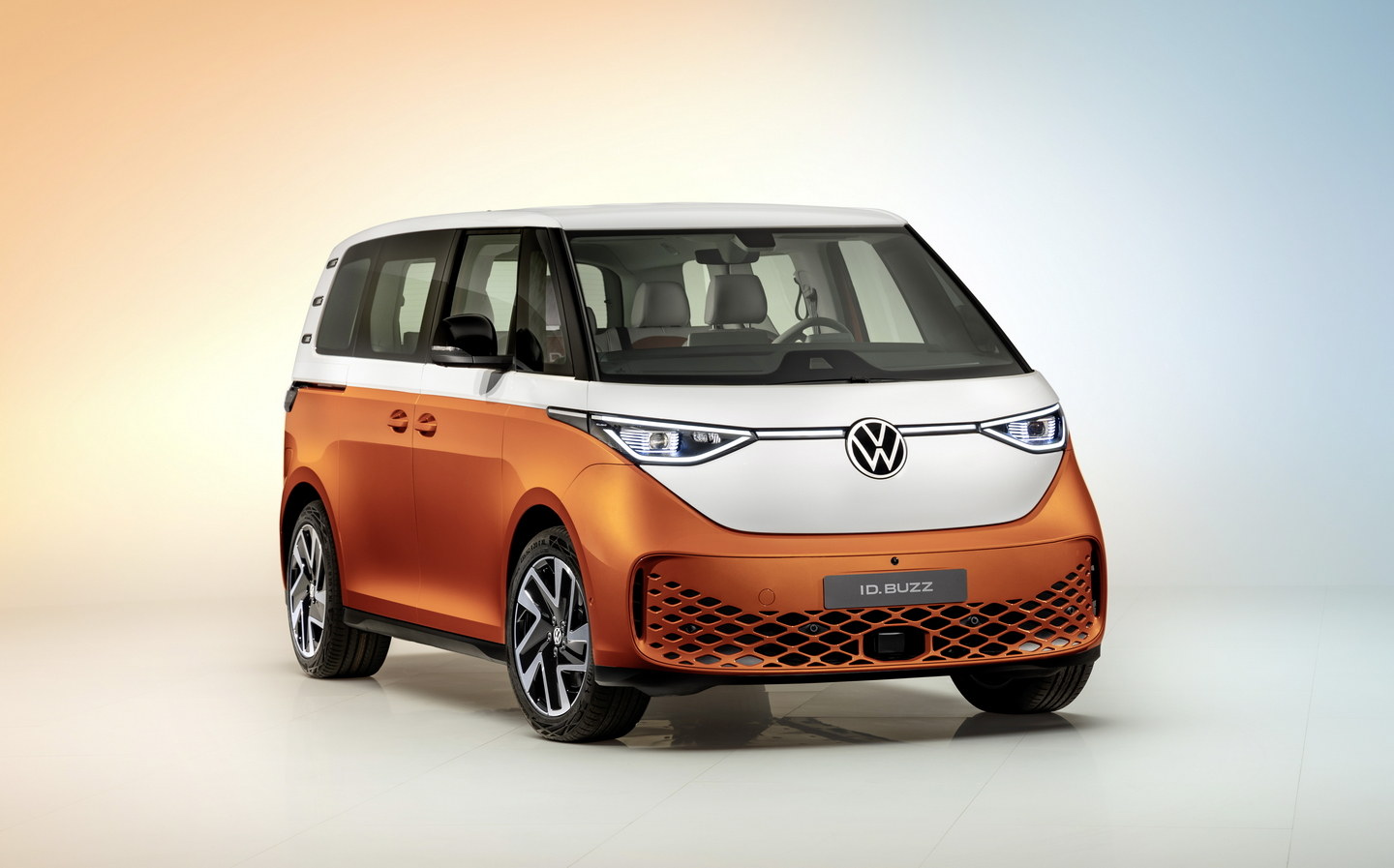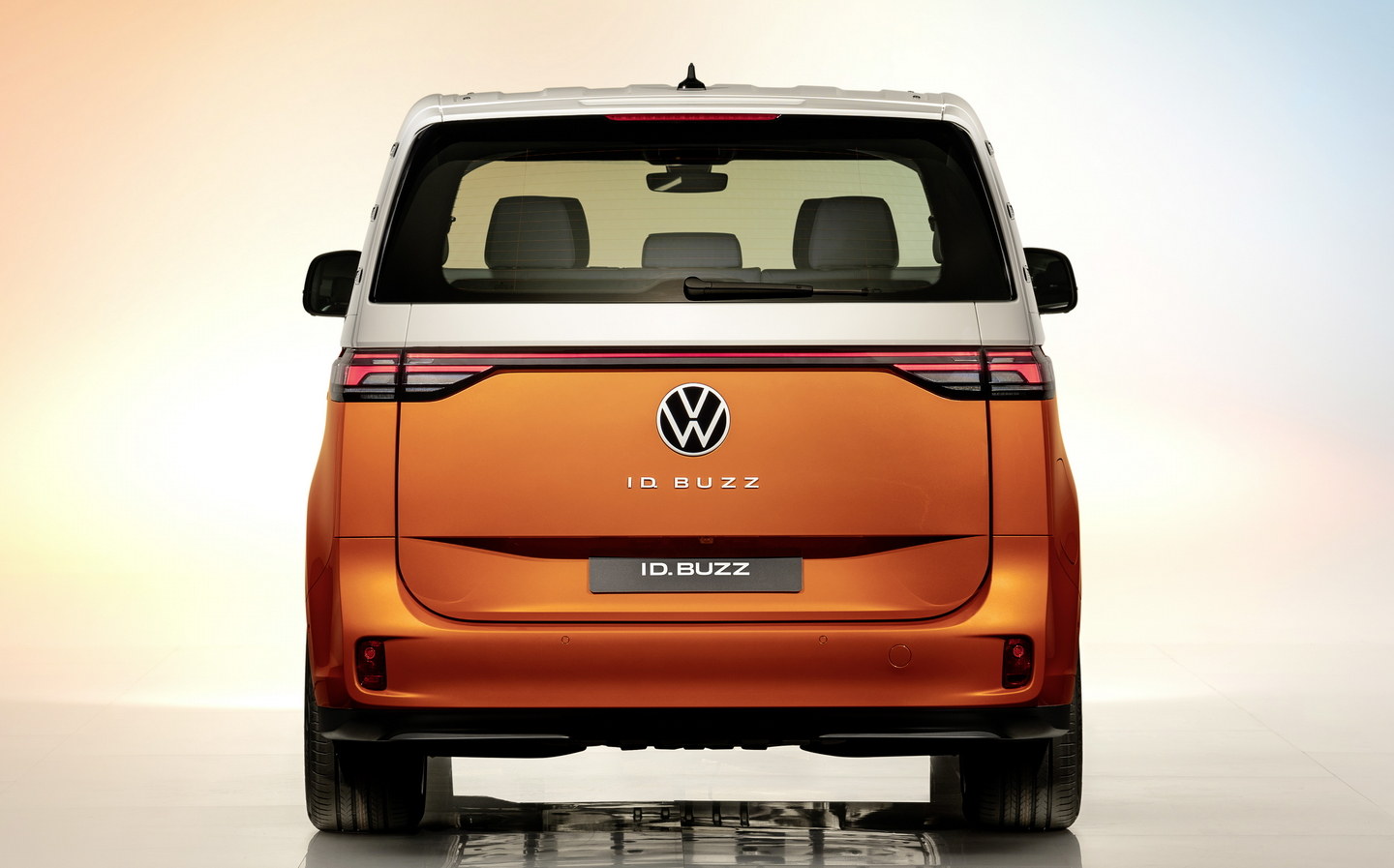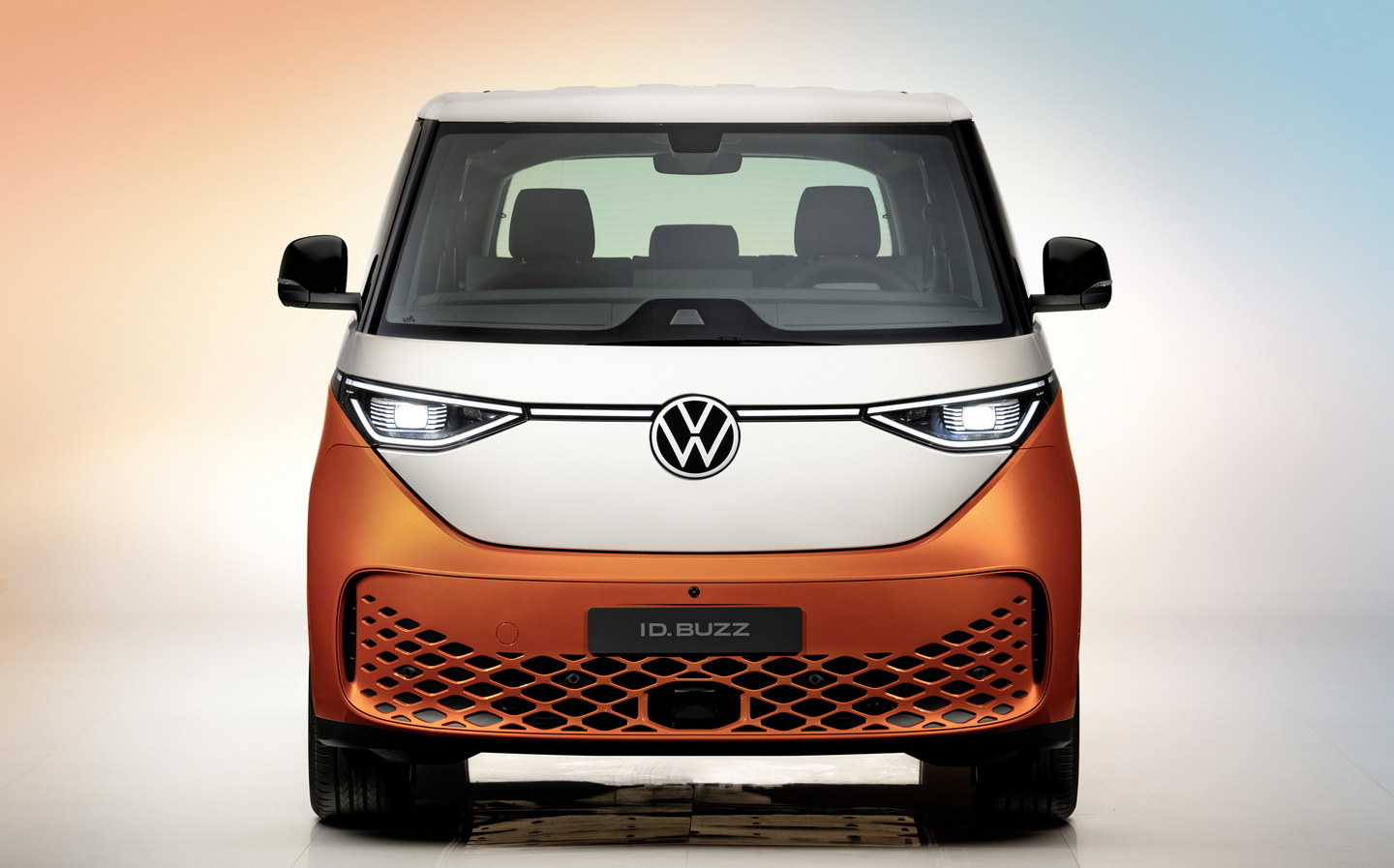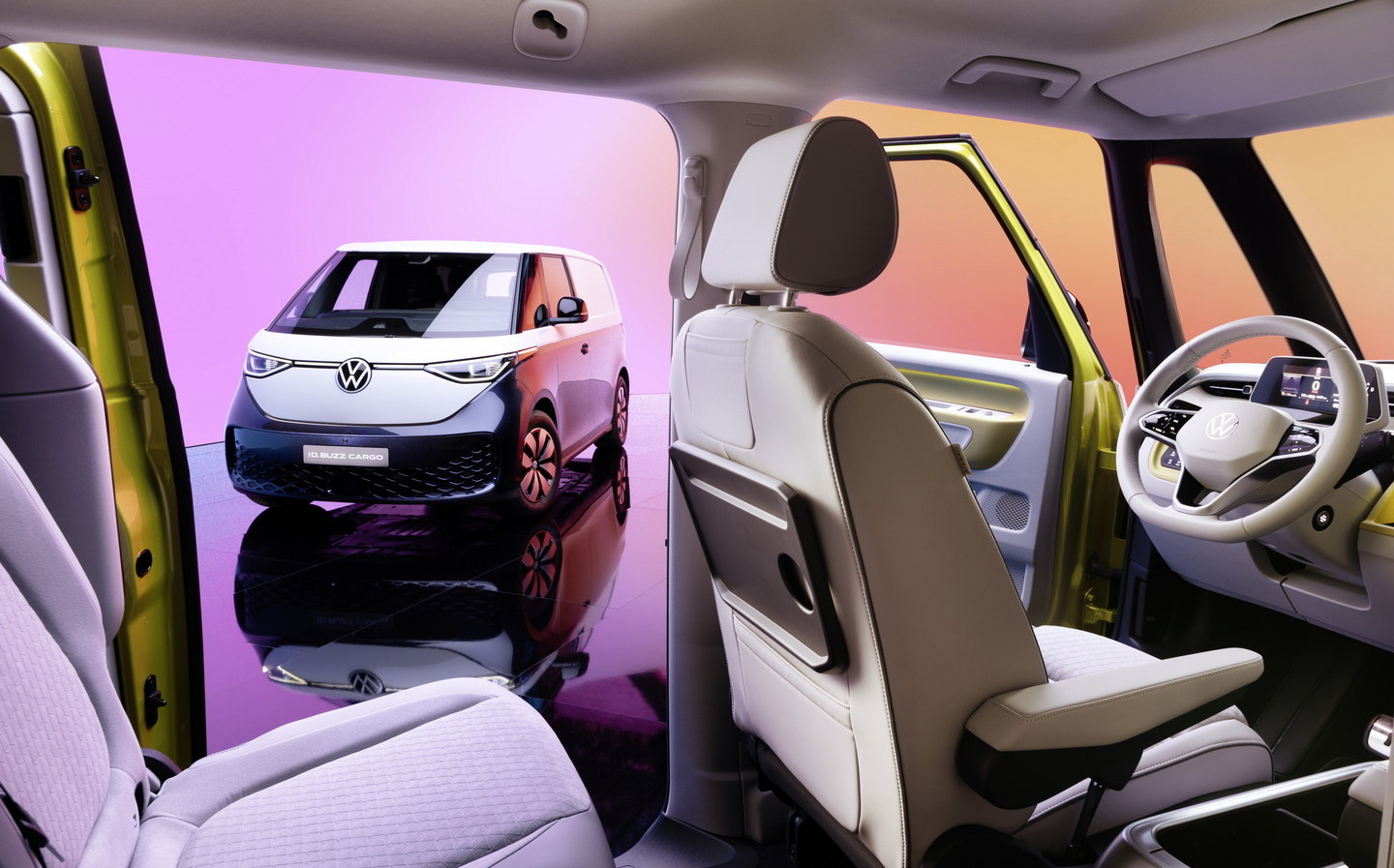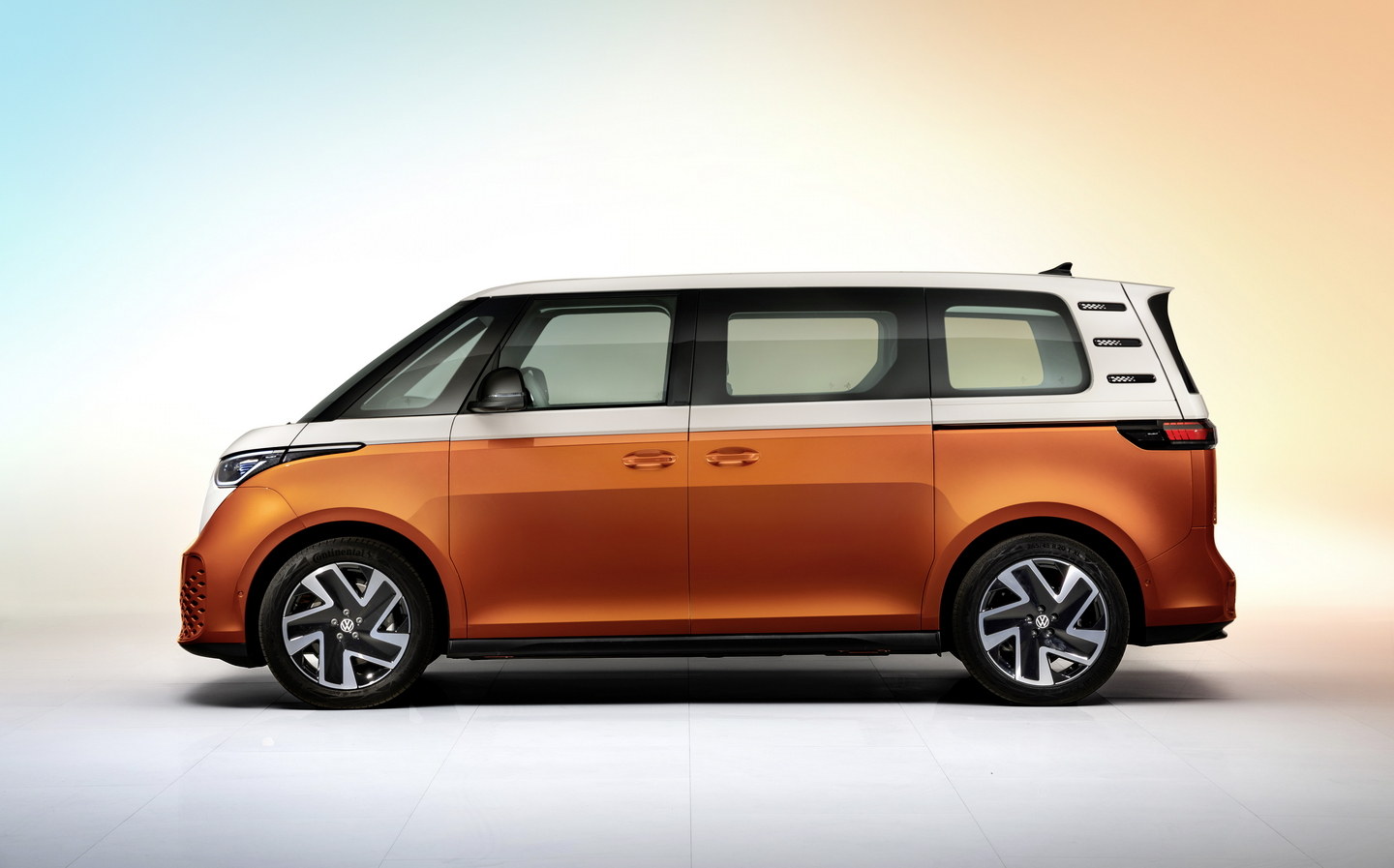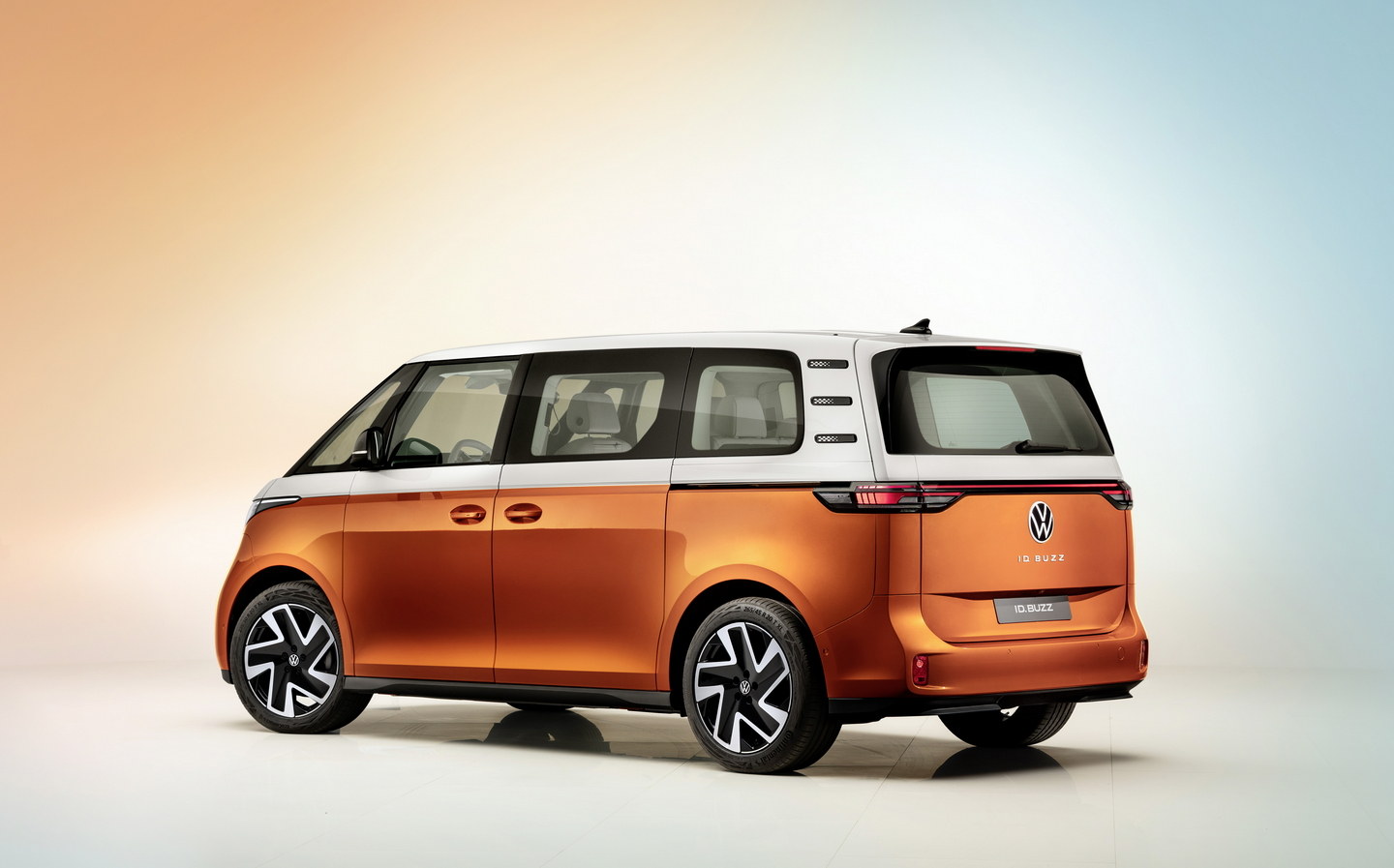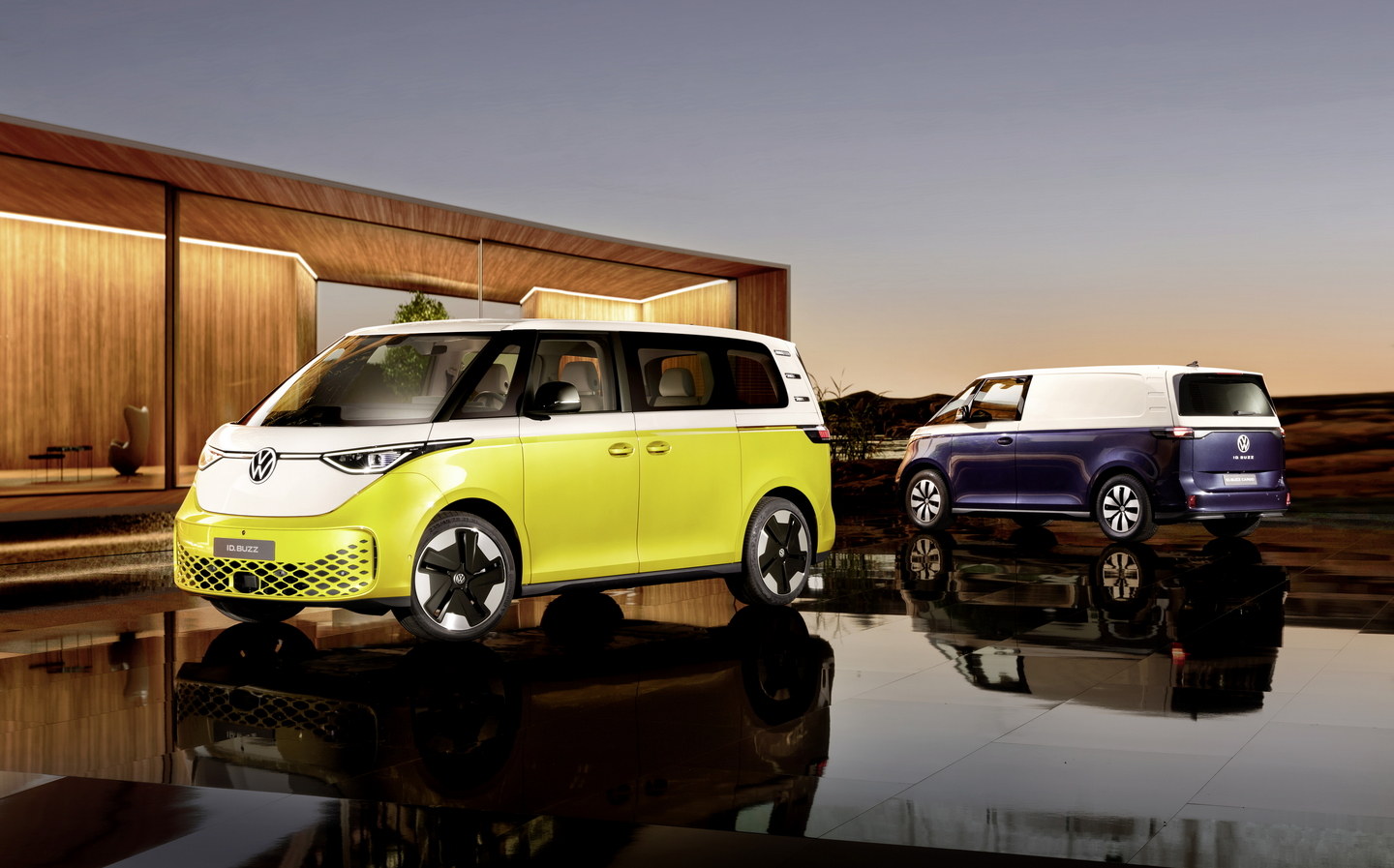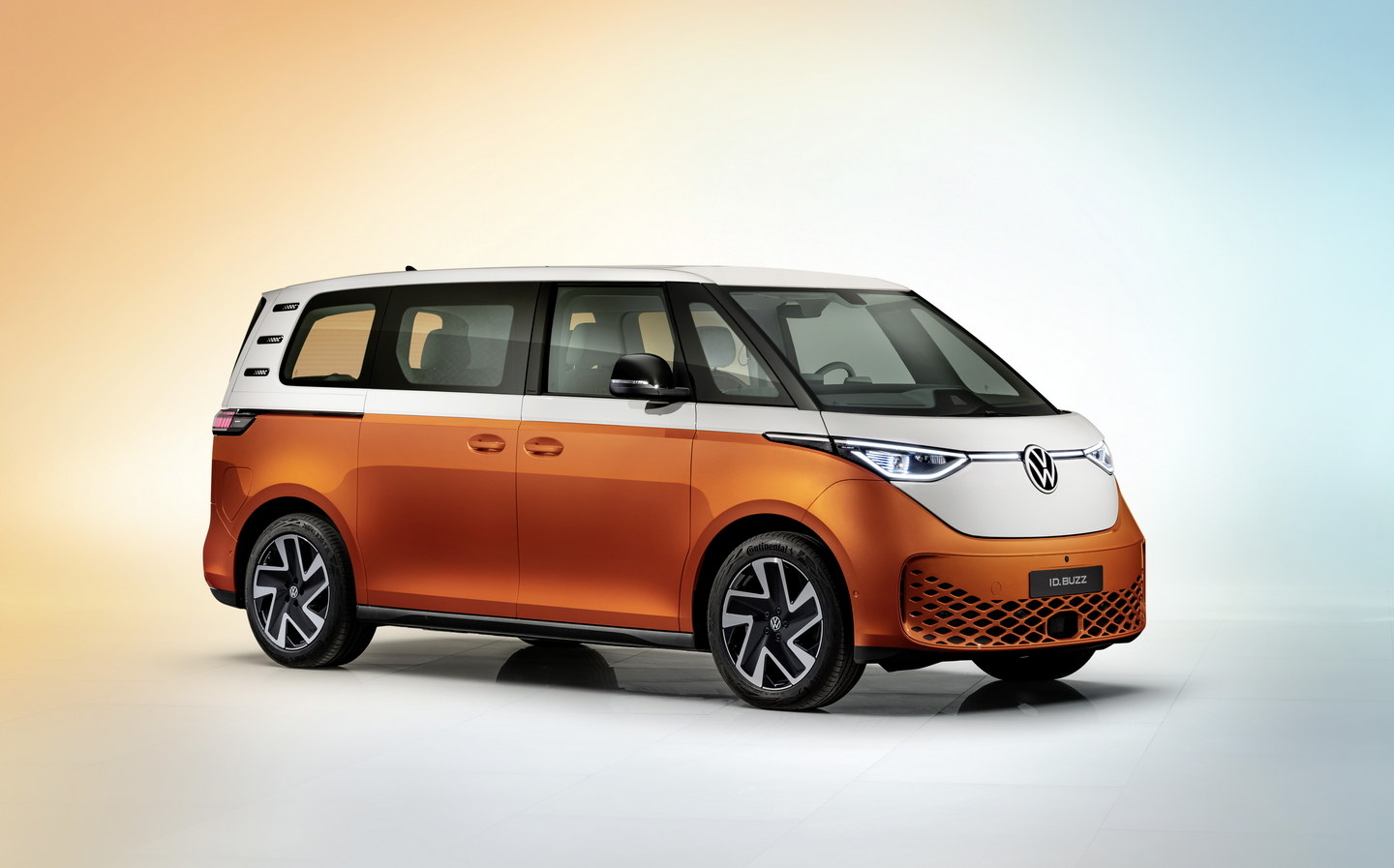Retro electric people carrier Volkswagen ID.Buzz revealed in full
Newquay here we come
Volkswagen has finally taken the camouflage off its ID.Buzz electric MPV, more than twenty years after a retro homage to the company’s iconic Microbus model was first mooted.
Initially available in both five-seat ID.Buzz passenger (check out our review of the pre-production version here) and ID.Buzz Cargo commercial versions, the model will go on sale in May prior to arriving in the UK late in 2022.
While the production ID.Buzz isn’t as outwardly retro as some of the concepts leading up to it, the styling is very much inspired by that of the 1950s VW Transporter (known as the Bulli in some markets) with soft, rounded edges, the VW logo prominent and central on the vehicle’s front end and optional two-tone paint.
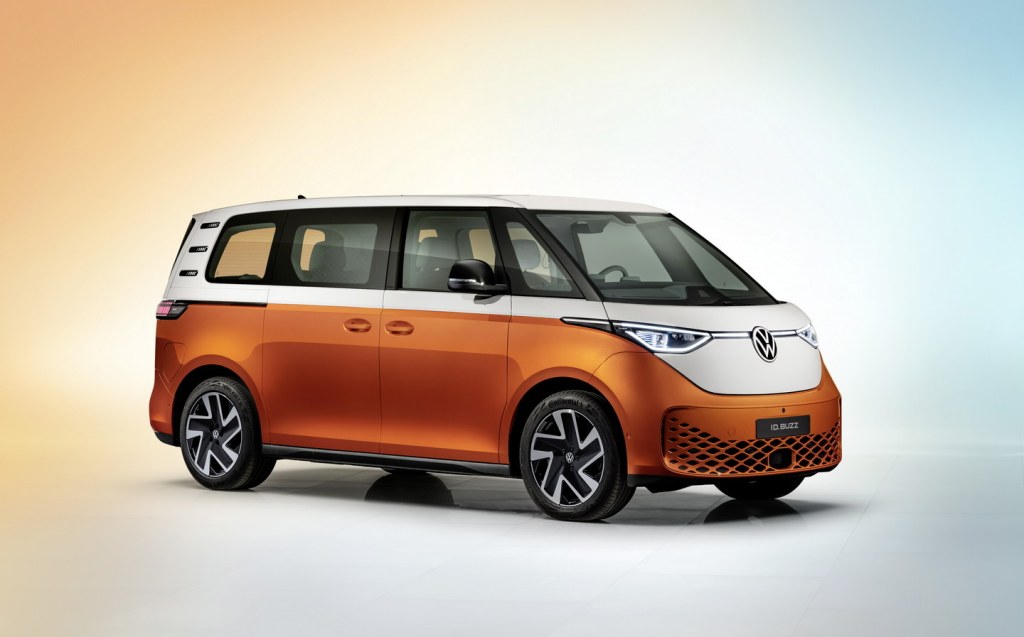
Although based on the same scalable electric underpinnings as the VW ID.3 and ID.4, the ID.Buzz has roughly the same wheelbase (the distance been the front and rear axles) as that of VW’s T6.1 Multivan. Overall, though, is actually slightly shorter (and wider), with the wheels pushed far into each corner. A longer model is coming down the line for maximum cargo-carrying ability.
Both front and rear overhangs are short because of the lack of a conventional engine, while a slightly sloping front promises a drag coefficient of 0.285 — far better than the barn-door aerodynamics of the original — to better optimise range and performance.
Rather than the Bulli’s original big round headlamps, the ID.Buzz gets slim, LED matrix units with the now familiar (and familial) LED strip across the front between the two lights. The rear LED cluster also gets the same light bar treatment.
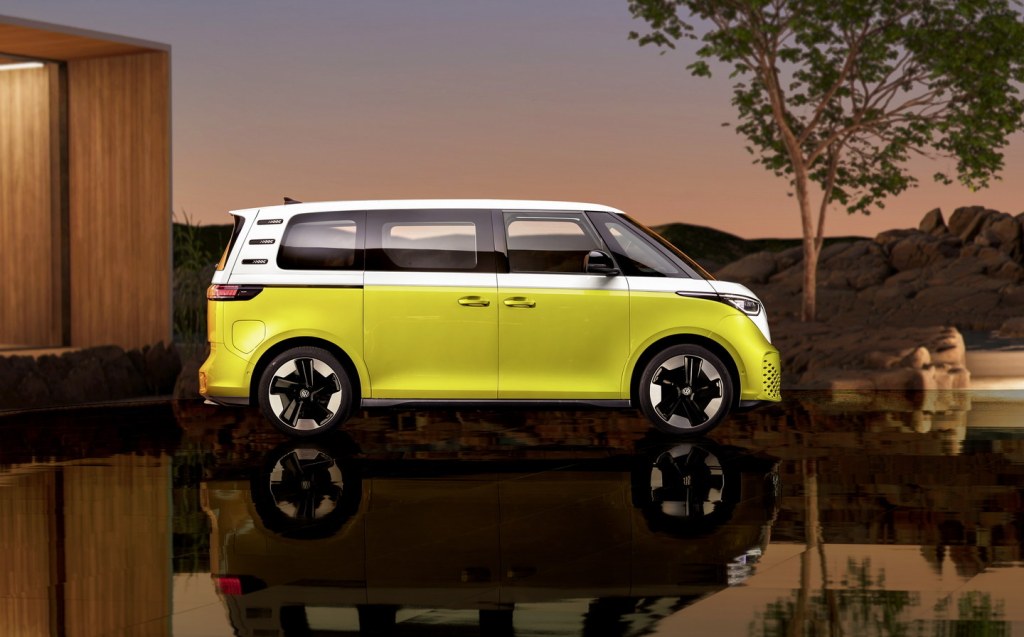
Although the ID.Buzz will be available in single, solid colours, there’ll also be a retro duo-tone option with Candy White on top and a range of attractive metallic shades including bright yellow, indigo, orange and green.
What’s ID.Buzz like inside?
While the interior can be optioned with contrasting colours giving it a retro vibe, it’s an entirely modern and practical affair with plenty of digitisation, sliding-door access to the three rear seats and extensive use of synthetic and recycled materials for the furnishings.
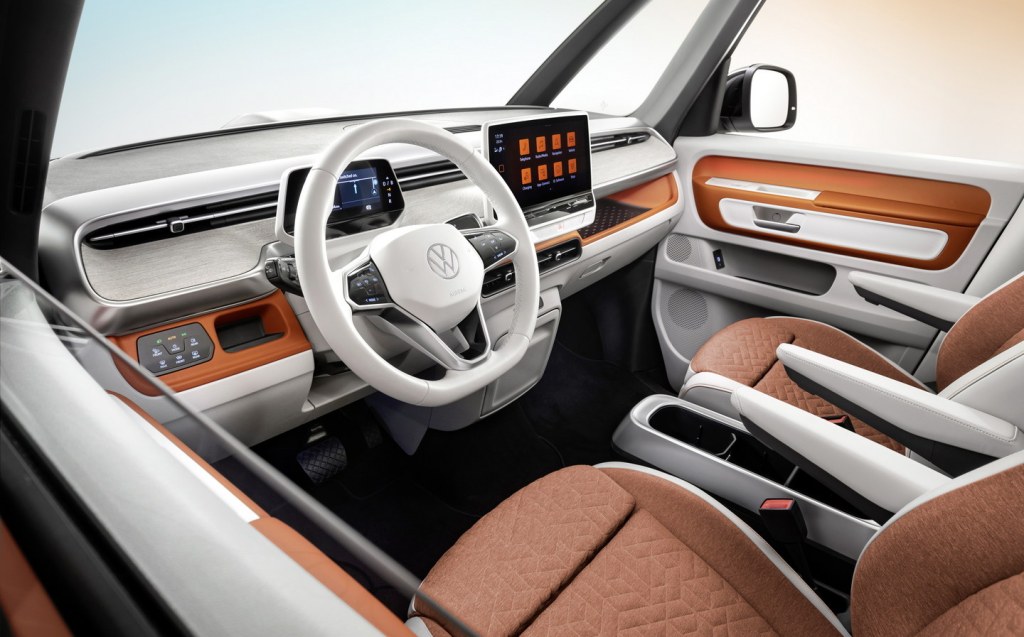
The layout will be very familiar to dirvers of the ID.3 and ID.4. In front of the driver sits a 5.3in digital instrument panel and centrally mounted in the middle of the dash is a 10in infotainment screen (12in is optional).
Instead of physical buttons, below the screen sit digital switches and sliders for controlling temperature and stereo volume, as well as the various menus within the multimedia system for driving modes and assistance systems. The transmission is controlled via a steering column switch.
In keeping with the ID.Buzz’s position as a modern family car, there are eight USB charging ports dotted throughout the cabin. The three rear seats can slide back and forth lengthways by 150mm and can be split-folded in a 60:40 configuration.
Behind the second row there’s boot space of a substantial 1,121 litres that expands to a fairly cavernous 2,205 litres once the rear seats are folded down.
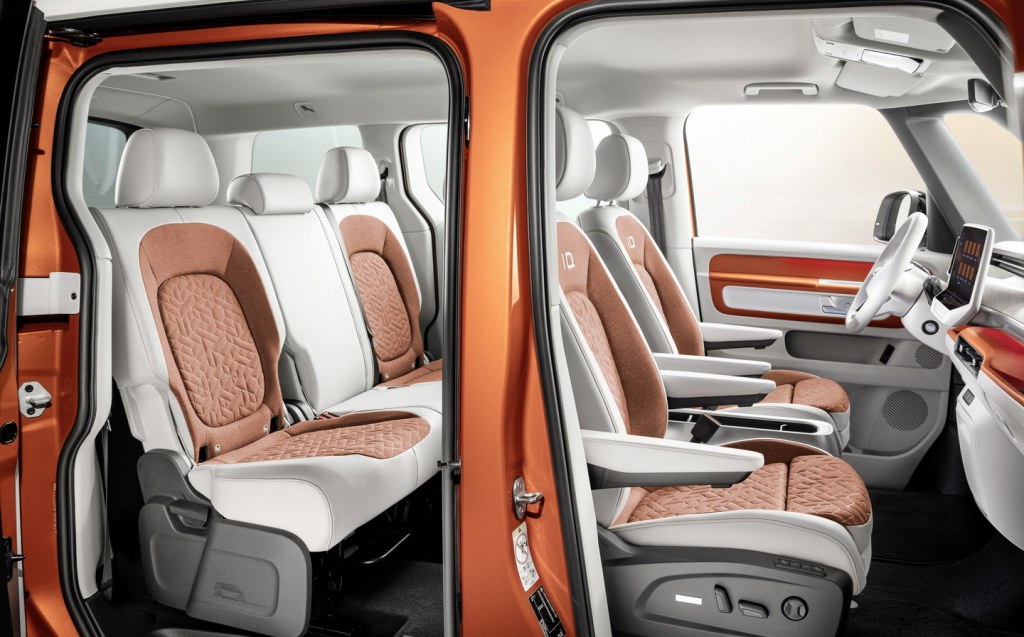
How much power does it have?
Sending power to the ID.Buzz’s rear wheels via a 150kW (201bhp) electric motor is a battery pack with a capacity of 77kWh. While no figures for range have been released yet, expect the ID.Buzz to be anble to travel around 250 miles between charges.
With 170kW DC rapid charging capability, topping up from 5% to 80% battery should be possible in around 30 minutes.
There will be all-wheel-drive versions in time, which will make getting off sandy beaches easier, as well as a high-performance GTX variant, likely with the same 295bhp powertrain as found in the ID.4 and ID.5 GTX.
Conveniently, the ID.Buzz is due to be equipped with “Plug & Charge”, a system through which, as the name suggests, the driver can plug in and recharge using various EV public charging networks without having to worry about having the right app or membership.
Billing is through VW’s “We Charge” contract and the car itself is capable of communicating with the charger and handling the transaction. Volkswagen is currently in talks with other charging companies, but so far Plug & Charge is available on the Ionity, Aral, BP, Enel, EON, Iberdrola and Eviny networks throughout Europe and the UK.
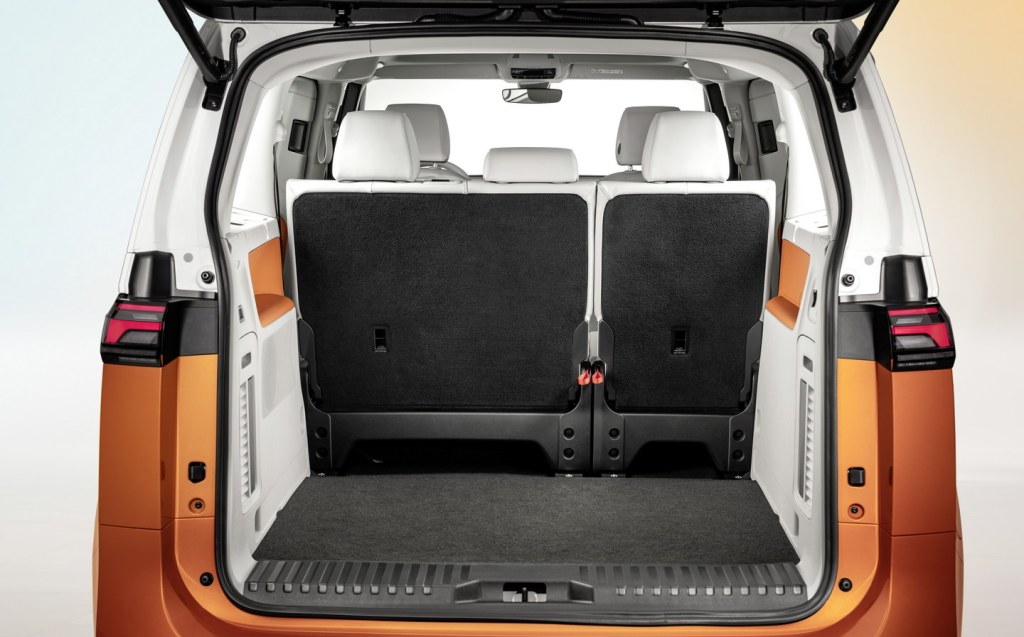
There are more than thirty driver and safety assistance features including the latest version of VW’s Travel Assist system utilising Car2X communication to alert drivers to hazards and warnings in the vicinity. Lane Keeping Assist is standard, but features such as adaptive cruise control, Parking Assist and reversing cameras may not be standard across the range.
Are there any alternatives to the VW ID.Buzz?
The ID.Buzz’s most obvious rivals come in the form of other electric van-based MPVs such as the Citroën e-SpaceTourer and Mercedes EQV.
How much does it cost and when does it go on sale?
With prices expected to start from a shade under £50,000 once the order books open around May 2022, it remains to be seen whether VW’s cool, practical and high-riding new Bulli is enough to tempt families in search of extra space away from their SUVs and crossovers.
First deliveries will be from around autumn, though be aware that the entire new car ecosystem has been hit by the semiconductor chip shortage, so hope for the best but expect delays. It’s unclear whether the Russian invasion of Ukraine will affect production, though we know that Porsche, a VW Group brand, has been hit by the crisis.
Related articles
- If you found Volkswagen ID.Buzz unveiled with retro style and practical interior, you may want to read our review of a VW ID.Buzz prototype
- Here are all the car makers’ electric car plans
- And don’t miss our review of the divisive BMW iX
Latest articles
- Watch new Porsche 911 GT3 smash Nürburgring record for manual cars

- Skoda Elroq 2025 review: Czech carmaker can’t seem to miss with its electric family cars

- Five best electric cars to buy in 2025

- Should I buy a diesel car in 2025?

- F1 2025 calendar and race reports: The new Formula One season as it happens



